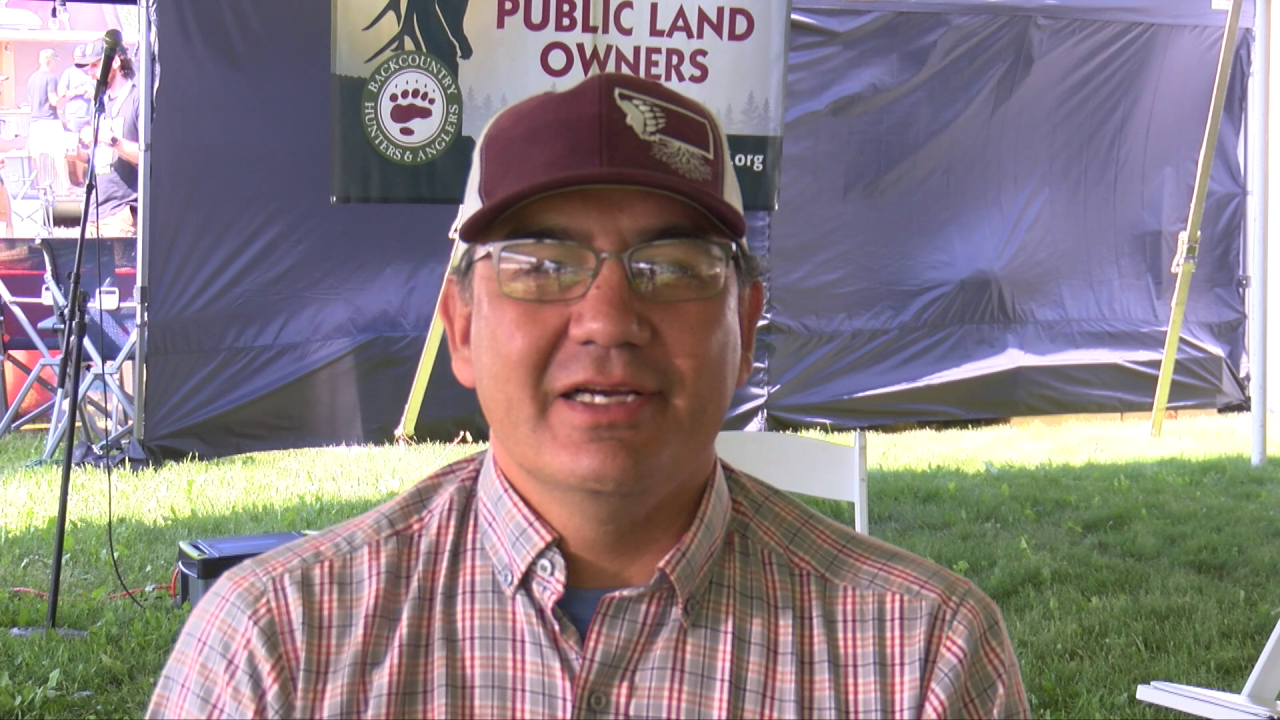MISSOULA — The American bison, often referred to as buffalo, or what the Blackfeet call “Iinnii,” no longer roam wild like they once did, but traditional practices tied to the animals carry on.
On Friday, a ceremonial butchering, called a “Buffalo Breakdown” by Blackfeet members, was showcased to a Backcountry Hunters & Anglers crowd in Missoula.
Blackfeet Tribal member Tyson Runningwolf was behind the partnership to bring the butchering to the BHA North American "Rendezvous" at Fort Missoula.
“Before Backcountry Hunters and Anglers interest, before public lands, these were native lands and treaty lands," Runningwolf told MTN News. "I think buffalo would be a great way to have everybody come together.”

Runningwolf said the idea came as a partnership from one hunter to another. “If we don't have the fear of bison being back on the landscape, it's gonna benefit everybody. And that we can break down that barrier of having them on the landscape, so that we can maybe even be hunting in partnership together.”
By mid-day, the animal was delivered from Roam Free Ranch in Hot Springs. Inside a tent, BHA members from across the country watched, learned, and participated in the traditional butchering.
Runningwolf discussed buffalo jumps, traditional harvests, and dispelled one myth to the crowd of hunting enthusiasts - tribal people did not utilize the entire buffalo every time.
Before European settlement, millions of bison dominated the North American landscape. They were hunted to near-extinction and are no longer part of the natural ecosystem.
Indigenous people living here had close relationships to herds. Blackfeet Medicine Bundle Holder and bison manager Sheldon Carlson keeps that alive: “That's what my part of life is, trying to help people understand the way a buffalo is like how us humans are. That's how I looked at it right off the bat,” Carlson said.

Part of his work is connecting generational experience. “So I respect my elders because that's how I learned a lot what I know today is because of that knowledge,” Carlson explained. “I take high school students out and help me shoot them so they can have that story that they shot a bison and what the purpose was for.”
At the event, BHA had more workshops discussing the “in-flux” present and future of bison. Director of Innovative Alliances Rachel Schmidt said the animal represents Montana to BHA's country-wide membership. She explained, “In some spots in some parts of the country, they'll talk about skinning squirrels. But up here in Montana, we just thought it would be really appropriate. Let's definitely talk about how do we break down a large big game animal, and, you know, everybody just loves bison," Schmidt said.
MTN News gathered a few crowd reactions to the showcase.
Kirk Port of North Carolina said the bison butchering runs contrast to whitetail deer, which he hunts locally: “This situation they're taking the quarters off and back east when we're whitetail hunting, we open up the body cavity right there where the animal lays.” He said bison do not roam anywhere in that area, despite historical range: “We do not see bison unless they're domesticated."
Montana BHA member Jack Hudland said he puts in a tag for bison every year but hasn't yet had an opportunity to hunt one. "It's incredible to see. Especially starting off with, you know, the prayer and showing the reverence for the animal is really cool to see something that not all hunters do all the time," Hudland said. "And then to see all the different ways that I would have never thought of using - the head to prop the animal up when you're butchering it, the different techniques that you can learn from people that have been doing it for thousands and thousands of years."





